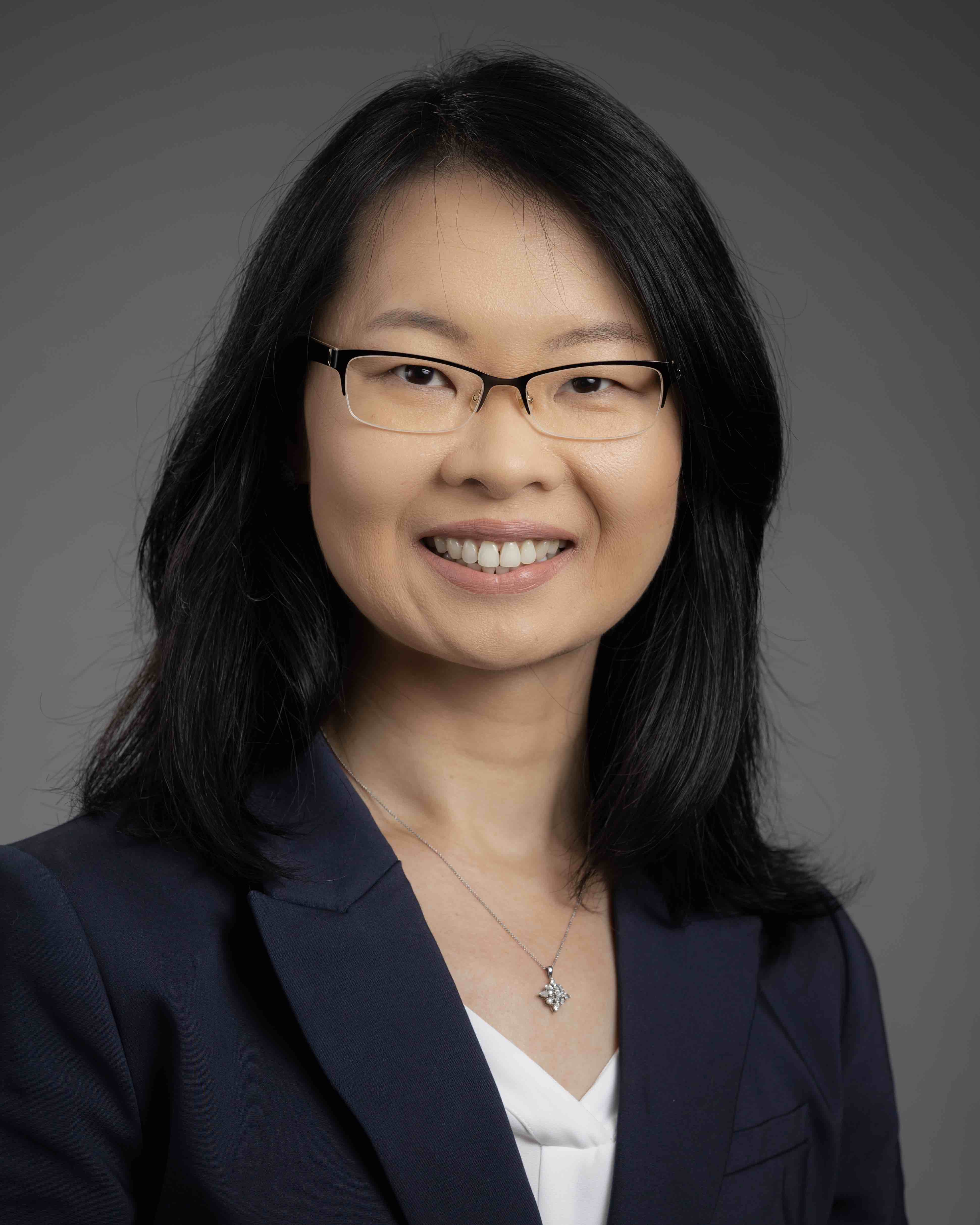
Liu, Careesa

Careesa Liu
Assistant Professor | Biomedical Engineering and Science
Contact Information
Personal Overview
Dr. Careesa Liu is a biomedical engineer with extensive experience in conducting brain imaging and neurotechnology research across both academic and industry settings. Her research interests lie in creating and utilizing non-invasive technologies to enhance brain function assessment in both clinical and everyday settings, combining functional brain imaging with machine learning advances. Her previous research has helped create a new field in brain imaging and biomedical engineering, and she has also co-invented patented neurotechnologies. She is passionate about teaching, having previously created and directed an award-winning experiential learning program for STEM training. She serves as a reviewer for several peer-reviewed journals, and is a member of journal editorial boards. She has won numerous awards, such as the Woman to Watch Award and Spirit of Canada150 Award.
*Currently recruiting graduate and undergraduate research assistants. Interested students should contact Dr. Liu at liuc@fit.edu.
Educational Background
Ph.D., Biomedical Engineering, Simon Fraser University, Canada
M.A.Sc., Biomedical Engineering, University of Toronto, Canada
B.A.Sc., Engineering Science, University of Toronto, Canada
Professional Experience
Nov 2022-Present, Assistant Professor, Biomedical Engineering, FIT
2021-2022, Senior Researcher, Myant Inc., Canada
2020-2021, Postdoctoral Fellow, Rotman Research Institute, Canada
2007-2011, Biomedical Research Engineer, National Research Council Canada
Current Courses
BME 4444 Neural Engineering
BME 3240 Computational Methods in Biological Systems
Selected Publications
Publications
- Liu CC, Ghosh Hajra S, Pawlowski GM, Fickling SD, Song X, D’Arcy RCN. (2020) “Differential neural processing of spontaneous blinking under visual and auditory sensory environments: An EEG investigation of blink-related oscillations”. 218; 116879. https://www.sciencedirect.com/science/article/pii/S1053811920303657
- Liu CC, Ghosh Hajra S, Song X, Doesburg S, Cheung T, D’Arcy RCN. (2019) “Cognitive loading via mental arithmetic modulates effects of blink-related oscillations on precuneus and ventral attention network regions”. Human Brain Mapping. 40;2;377-393. https://onlinelibrary.wiley.com/doi/abs/10.1002/hbm.24378
- Liu CC, Ghosh Hajra S, Pawlowski GM, Fickling SD, Song X, D’Arcy RCN. (2019) “Novel signal processing technique for capture and isolation of blink-related oscillations using a low-density electrode array for bedside evaluation of consciousness”. IEEE Transactions on Biomedical Engineering (TBME). https://ieeexplore.ieee.org/abstract/document/8707053
- Liu CC, Ghosh Hajra S, Cheung T, Song X, D’Arcy RCN. (2017) “Spontaneous blinks activate the precuneus: Characterizing blink-related oscillations using magnetoencephalography”. Frontiers in Human Neuroscience. 11:489. https://www.frontiersin.org/articles/10.3389/fnhum.2017.00489/full
- Frizzell T, Liu CC, Zeng A, Pan D, Ghosh Hajra S, D’Arcy RCN, Song X. (2022) " Artificial Intelligence in Brain MRI Analysis of Alzheimer’s Disease over the Past 12 Years: A Systematic Review”. Aging Research Reviews.https://pubmed.ncbi.nlm.nih.gov/35358720/
- Ghosh Hajra S, Liu CC, Fickling SD, Pawlowski GM, Song X, D’Arcy RCN. (2021) “Event related potential signal capture can be enhanced through dynamic SNR-weighted channel pooling”. Sensors. 21; 7258. https://pubmed.ncbi.nlm.nih.gov/34770564/
- Ghosh Hajra S, Gopinath S, Liu CC, Pawlowski GM, Fickling SD, Song X, D'Arcy RCN. (2020) "Enabling event-related potential assessments using low-density electrode arrays: A new technique for denoising individual channel EEG data". IEEE International IOT, Electronics and Mechatronics conference (IEMTRONICS).https://ieeexplore.ieee.org/abstract/document/9216365
- Ghosh Hajra S, Liu CC, Song X, Fickling S, Liu LE, Pawlowski G, Jorgensen JK, Smith AM, Schnaider-Beeri M, van den Broek R, Rizzotti R, Fisher K, D’Arcy RCN. (2016) “Developing brain vital signs: Initial framework for monitoring brain function changes over time,” Frontiers in Neuroscience. https://www.frontiersin.org/articles/10.3389/fnins.2016.00211/full
- Sculthorpe-Petley L, Liu C, Ghosh Hajra S, Parvar H, Satel J, Trappenberg TP, Boshra R, D’Arcy RCN. (2015) “A rapid event-related potential (ERP) method for point-of-care evaluation function: Development of the Halifax Consciousness Scanner.” Journal of Neuroscience Methods. 245:64-72. https://pubmed.ncbi.nlm.nih.gov/25701685/
Patents
- D’Arcy RCN, Weaver D, Ghosh Hajra S, Liu C, Sculthorpe L. “Cognitive Function Assessment in a Patient”. United States, US9339227 B2, Granted 2016-05-17; Europe, EP2584963, Granted 2016-11-09; Japan, 2013-515647, Granted 2017-05-10.
- D’Arcy R, Bollinger F, Fickling S, Frehlick Z, Gurm S, Ghosh Hajra S, Hamzei N, Liu C, Livingston A, Smith C, Tannouri P, Thiem M, Yee E. “System and method for automatic evoked potential measurement”. Filed. PCT/CA2020/050360
Recognition & Awards
Research Awards & Grants
- Aging-in-Place Challenge Program, National Research Council Canada
- NSERC PDF, Canada
- CIHR CGS-D, Canada
- Soupcoff Research Grant, Baycrest Health Sciences, Canada
Leadership
- Women of Distinction Award (finalist), YWCA Metro Vancouver
- Woman to Watch Award, Wendy McDonald Diversity Awards, Greater Vancouver Board of Trade
- Spirit of Canada150 Award, Member of Parliament Ken Hardie
- Global Best Award, North America & Worldwide Levels, International Education-Business Partnership Network and Conference Board of Canada
Research
Research in our lab combines non-invasive brain imaging methods such as electroencephalography (EEG), magnetoencephalography (MEG), and transcranial magnetic stimulation (TMS) with advanced analytics to study brain function, with the goal of creating novel technologies and digital biomarkers to improve brain function assessment in health and disease. Sample projects include examining the neural correlates of information processing following spontaneous blinking (blink-related oscillations), developing imaging-based techniques and analytic algorithms to advance brain function assessment in a variety of situations (e.g. clinical disorders, everyday scenarios like driving, and specialized environments like aircraft cockpits), as well as developing portable, user-friendly devices for objective brain function monitoring in real life.


 Give to Florida Tech
Give to Florida Tech